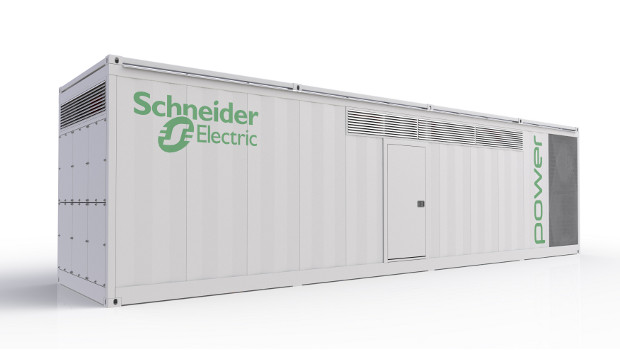Over the last two years, according to Kevin Brown, vice president, Data Centre Global Solutions, Schneider Electric has been looking into why, with such high levels of interest from users in prefabricated data centre infrastructure, there has not been more data centres built this way.
“What we believe at this point is that customers want to see the benefits of prefab, but that the industry players have not stepped up with solutions that are viable and allows them to realise the benefits, and yet still meets their requirements,” said Brown.
Many of the offerings have been too limited and users need a larger portfolio of building block to work from, said Brown. For example, options should include 250, 500 and 1MW power modules, and chilled water solutions as well as air economisation, with various different forms of IT modules.
Another reason is that people have started with prefabricated modules and prefabricated designs and have been left to fit their data centres around this, as opposed to begin able to customise the prefabricated solutions to their needs.
“We have built a library of reference designs which drove the portfolio of building blocks that we need to give customers a good starting point in terms of the data centre they can build,” Brown.
Schneider Electric has introduced 14 prefabricated data centre modules and 12 new prefabricated data centre reference designs. The reference designs detail complete data centres scalable in 250kW to 2MW increments and meet Uptime Tier II and Tier III standards.
The new prefabricated modules deliver IT, power, and/or cooling integrated with best-in-class data centre infrastructure components and StruxureWare for Data Centres data centre infrastructure management (DCIM) software for an easy-to-deploy, predictable data centre. Prefabricated modules range in capacities from 90kW to 500kW and are customisable to meet end user requirements.
On the software side, according to Brown, the approach can be very proprietary in nature and many do not have the instrumentation level needed. With prefab, all of this should be preconfigured in the factory so that when it arrives, it works. This offers a more open approach to allow people to use whatever monitoring systems they want.
As flexible capacity becomes critical to data centre operations, according to Schneider, modular expansion is becoming a compelling option for data centre and facilities managers. The company said that with its new offerings, of “the industry’s first complete library of prefabricated data centre reference designs”, data centre managers looking to optimise deployment speed, performance, reliability and cost have a pre-engineered starting point to realise significant improvements in speed of deployment, flexibility and scalability, and predictability.
Prefabricated modules are delivered on-site preconfigured and pretested for an easy installation with a lead time of 12-16 weeks, said the maker, depending on the level of project complexity. Site preparation and module production can be completed concurrently, resulting in minimised on-site construction and deployment time.
Various module options and configurations enable the infrastructure to be deployed and scaled as needed to meet demand. Capital spending reductions result from eliminating complicated new construction or expensive building retrofits.
Prefabrication and factory testing reduces human error and on-site construction risks while improving compliance, safety, and efficiency. Design and manufacturing are closely coupled to greatly minimise uncertainty, which results in more predictable performance of the data centre infrastructure.
There have been some wild predictions around prefab, argued Brown, such as a suggestion that you can save up to 50% of your firsts costs, and but these are inaccurate and misleading.
This is much more of an approach that is based on a few standard starting points to allow users to get more of the benefits of prefab than was possible with previous offerings, said Brown.
“It is a very broad set of customer and data centre types that we are seeing going with prefabricated,” he said.
“Where it is most mature, and where we are seeing the greatest acceptance is where there is a requirement for high portability — so military applications, as well oil and gas exploration. There is a benefit to putting everything into an ISO container and putting it on an airplane and deploying it anywhere.”
Another area is where very high density is required, such as a major cloud providers.
“What we are announcing is a big step forward,” concluded Brown.
www.schneider-electric.com
TechCentral Reporters







Subscribers 0
Fans 0
Followers 0
Followers